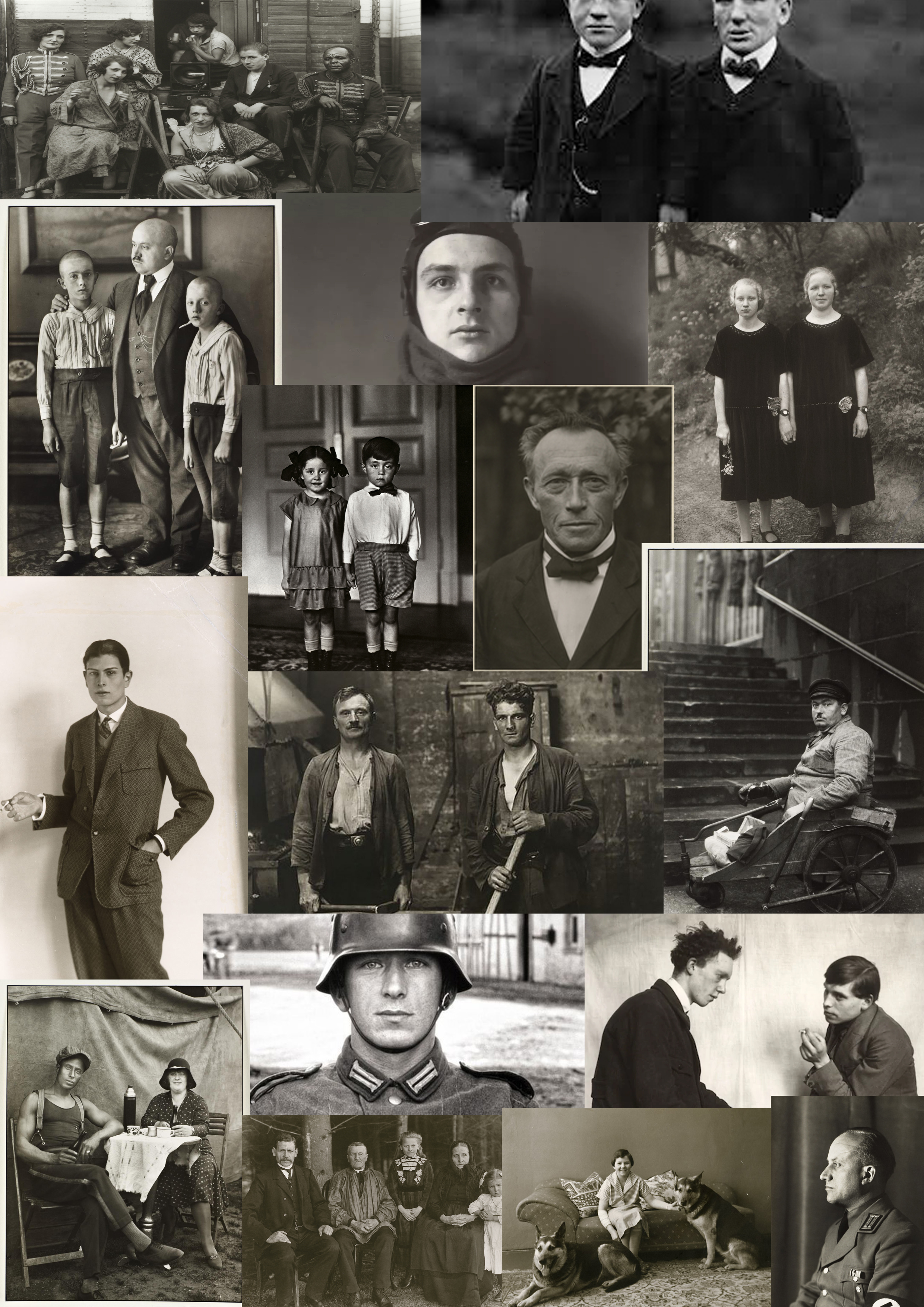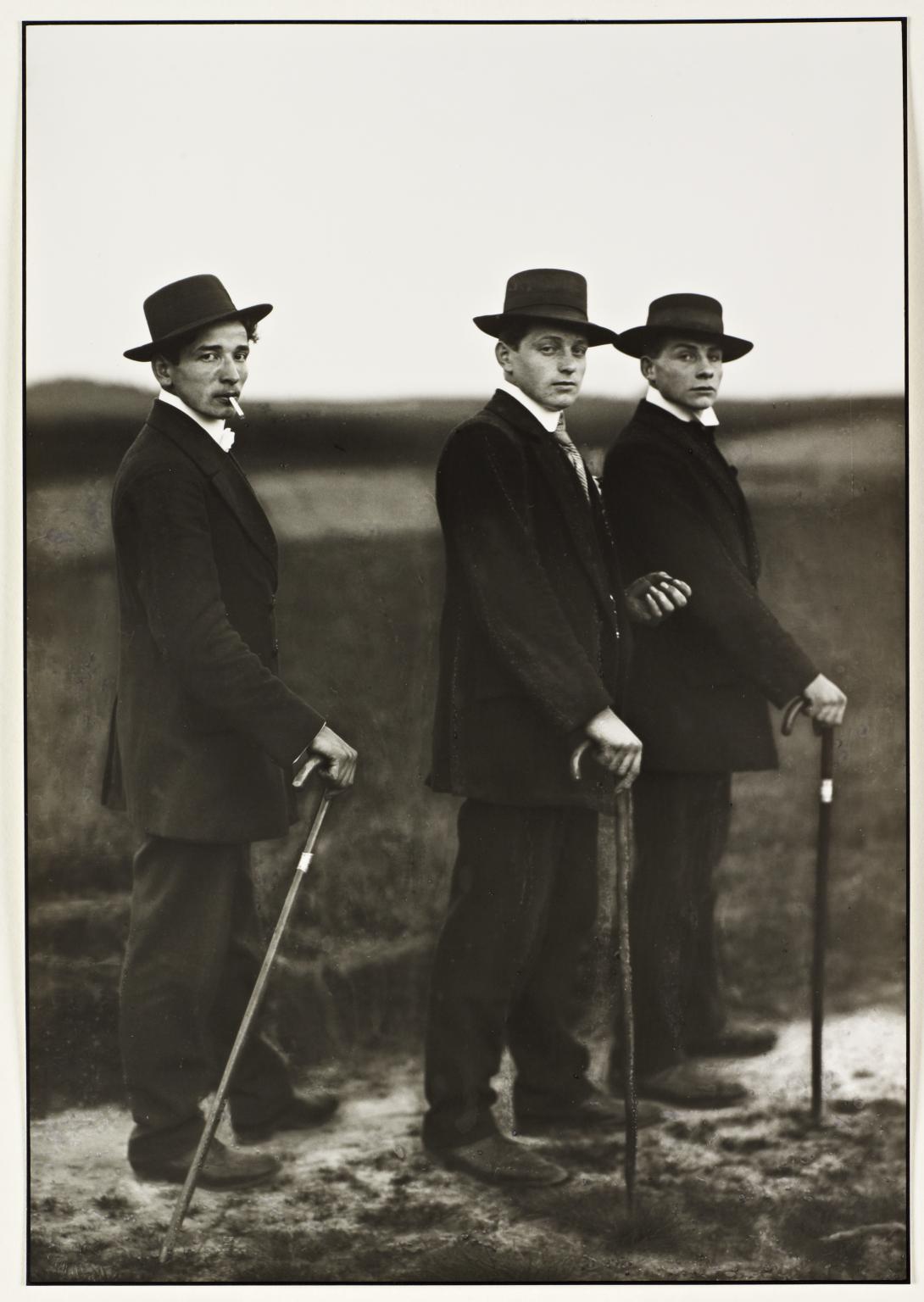AUGUST SANDERS, BACKGROUND INFORMATION:
During military service, August Sander was an assistant in a photographic studio in Trier; he then spent the following two years working in various studios elsewhere. By 1904 he had opened his own studio in Linz, Austria, where he met with success. He moved to a suburb of Cologne in 1909 and soon began to photograph the rural farmers nearby. Around three years later Sander abandoned his urban studio in favor of photographing in the field, finding subjects along the roads he traveled by bicycle.
Sanders set out on a photographic project to document the people of his native Westerwald, near Cologne. Sander photographed subjects from all walks of life and created a typological catalogue of more than six hundred photographs of the German people. Although the Nazis banned the portraits in the 1930s because the subjects did not adhere to the ideal Aryan type, Sander continued to make photographs. After 1934 his work turned increasingly to nature and architectural studies.
MOOD-BOARD:

WORK ANALYSIS:

TECHNICAL:
The image picturing the young farmers is well exposed, slightly on the over exposed side as the bright white sky and highlights are very prominent in this image.
VISUAL:
This black and white photograph is a group portrait of three young men portrayed outdoors on a path in a natural setting. They stand behind each other in single file, their bodies facing in the same forward direction perpendicular to the picture plane, their heads looking to their right straight at the camera. All three of them wear suits and hats and gaze with some self-assurance directly at the photographer. The young man on the left has unkempt hair peeking out from his tilted hat, a cigarette dangling nonchalantly from his lips, and holds a wooden cane at an angle to the ground. The central figure is holding a cigarette in his left hand and clasps a cane in the other, while the man on the right and at the front of the group seems rooted to the spot, his cane held straight to the ground echoing his upright posture.
CONTEXTUAL:
The photograph was taken by August Sander using a large format, glass plate camera with a long exposure time, the kind primarily used in portrait studios. This is one of many photographs taken by him of rural people from the wooded low mountain region of Westerwald in the German federal states of Rhineland-Palatinate, Hesse, and North Rhine-Westphalia. Westerwald was the region where the photographer was born, and it was where he traveled in search of new clients after setting up his portrait studio in Cologne-Lindenthal in 1910, having returned to Germany the previous year from Linz, Austria.
